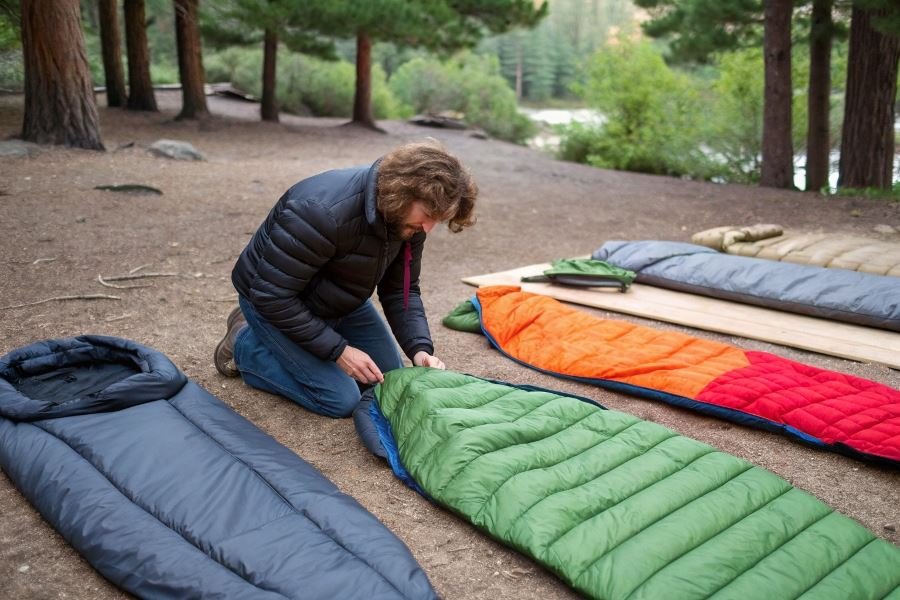
Ever watched a child’s face light up at the sight of stars overhead while snuggled in a tent? That moment alone makes finding the right family shelter worth every minute of research.
Camping with children transforms an ordinary outdoor experience into an extraordinary adventure filled with discovery, bonding, and memories that last a lifetime. But the foundation of this experience—quite literally—starts with selecting the right tent. The difference between a magical weekend and a miserable one often comes down to those crucial tent decisions you make before ever hitting the trail.
Space: The family frontier
When camping solo or with another adult, you might happily squeeze into a compact backpacking tent. With kids? Space becomes your new best friend. Children need room to move, play, and sometimes just escape from each other during those inevitable sibling squabbles. Look for tents with designated “rooms” or dividers that create privacy zones—perfect for changing clothes or creating a sense of personal space for older children.
Weather warriors: Protection from the elements
Family camping requires tents that can handle whatever Mother Nature throws your way. A quality family tent should feature:
- Robust waterproofing with high hydrostatic head ratings
- Sturdy pole structures that withstand wind
- Adequate ventilation to prevent condensation (and the dreaded “indoor rain”)
Setup simplicity: Because patience runs thin
Nothing tests parental patience quite like attempting to assemble a complicated tent with excited (or tired) children circling you like tiny tornados. Modern family tents with intuitive, color-coded setup systems can be the difference between starting your trip with laughter or tears—yours, not just the kids’.
Essential Features for Family Camping Tents
When planning outdoor adventures with your little explorers, shelter becomes your command center. The right tent transforms a potentially chaotic experience into an unforgettable family memory. Let’s dive into what truly matters when selecting your home-away-from-home.
Choosing a tent for camping with children requires balancing several critical factors that adult-only expeditions might overlook. The perfect family tent isn’t just about keeping rain out—it’s about creating a comfortable base camp that accommodates restless sleepers, early risers, and the inevitable collection of stuffed animals that somehow made it into the packing list.
Space that grows with your crew
Family comfort starts with adequate square footage—but “adequate” varies dramatically based on your specific needs:
- Floor space calculation: Allow 20-25 square feet per person minimum
- Height matters: Look for peak heights of at least 6 feet for changing clothes comfortably
- Room dividers: Essential for privacy and earlier bedtimes for younger campers
The Coleman Montana 8-Person Tent offers 112 square feet with a center height of 6’2″—enough for two adults, three kids, and their gear. Remember that manufacturer “person ratings” typically assume sardine-like sleeping arrangements with zero gear.
Pro tip: Always size up by at least 2 person capacity from your actual headcount to accommodate gear storage and comfortable movement.
Weather warriors stand tall
Nothing tests a parent’s patience like a leaky tent during a midnight thunderstorm with frightened children inside.
Weather resistance ratings follow a seasonal classification system:
| Rating | Best For | Features | Price Range |
|---|---|---|---|
| 1-Season | Indoor/Backyard | Minimal weather protection | $40-100 |
| 3-Season | Spring through Fall | Balanced ventilation/protection | $150-400 |
| 4-Season | Year-round use | Reinforced structure, snow shedding | $350-800+ |
The waterproof rating (measured in millimeters of hydrostatic head) should be at least 1500mm for the rainfly and 3000mm for the floor. The REI Co-op Base Camp series offers exceptional 3000mm waterproofing throughout with fully-taped seams.
Setup simplicity saves sanity
When you arrive at your campsite with hungry, excited children, tent setup complexity becomes the difference between adventure and meltdown.
Setup considerations for family camping:
- Assembly time: Under 15 minutes is ideal with helpers
- Pole structure: Color-coded or unified hub systems reduce confusion
- Instructions: Look for sewn-in, waterproof setup guides
Durability factors directly impact both your camping experience and long-term value:
- Denier rating: Floor material should be 68D or higher
- Pole material: Aluminum offers the best strength-to-weight ratio
- Zipper quality: YKK zippers resist jamming even with enthusiastic little hands
The Big Agnes Big House features pre-attached pole structure and color-coded webbing that makes setup possible even with “helpers” underfoot. Its 1500D polyester floor stands up to the traffic of multiple children racing in and out.
Remember that the best family tent balances these features against your specific camping style. Weekend warriors might prioritize setup simplicity, while extended-stay campers might invest more in durability and weather resistance. Either way, your tent becomes the backdrop for memories that will last a lifetime.
Family Tent Showdown: Top 3 Styles for Kid-Friendly Adventures
When camping with children, your tent becomes more than shelter—it’s your family’s wilderness headquarters. The right tent transforms chaotic outdoor adventures into cherished memories, while the wrong one can leave everyone soggy, cramped, and cranky. Let’s dive into the three tent styles that consistently deliver for families with young explorers.
Cabin-Style Tents: Your Wilderness Home
Cabin-style tents have revolutionized family camping with their near-vertical walls and apartment-like interior space. These rectangular havens offer what parents crave most: room to stand up straight and dedicated zones for different activities.
The Coleman Weathermaster series exemplifies why cabin tents excel for families. With typical ceiling heights of 6’8″ to 7’, parents can move around without the hunched-over shuffle that dome tents require. Many models feature room dividers creating private sleeping quarters—essential when camping with children of different ages or when parents need a sanctuary after bedtime stories.
The true magic of cabin tents lies in their organization potential. Interior storage pockets, gear lofts, and even closet poles for hanging clothes keep essentials accessible but off the ground. Some premium models like the REI Co-op Kingdom series offer vestibules that function as mud rooms—perfect for containing the inevitable dirt children track in.
| Cabin Tent Pros | Cabin Tent Cons |
|---|---|
| Maximum interior space | Less wind-resistant |
| Room dividers for privacy | Heavier and bulkier |
| Excellent organization options | Longer setup time |
| Standing height throughout | Requires larger campsite |
Dome Tents: Weather Warriors
When the forecast looks questionable or your camping destination features unpredictable conditions, dome tents deliver peace of mind through superior stability. Their curved pole structure creates a self-supporting frame that sheds wind and rain with remarkable efficiency.
The North Face Wawona represents the evolution of family-friendly dome designs. Modern family domes strike an impressive balance—they’re sturdy enough to withstand unexpected storms yet spacious enough for family comfort. The curved walls sacrifice some interior volume compared to cabin styles, but the tradeoff brings significantly improved weather resistance.
Dome tents also excel in versatility across seasons. Many feature convertible ventilation systems with mesh panels that can be exposed for summer airflow or covered for shoulder-season warmth. This adaptability makes them ideal for families who camp throughout the year or in varied climates.
For families who hike to their campsites, dome tents offer the best strength-to-weight ratio of any family tent design.
Instant Tents: Setup Salvation
Nothing tests parental patience like assembling a complicated tent with excited (or tired) children circling like sharks. Instant tents—with pre-attached poles that expand like umbrellas—have transformed the family camping experience by reducing setup from a 30-minute ordeal to a 2-minute triumph.
The Gazelle T4 Hub demonstrates why instant tents have captured the family market. These engineering marvels feature pre-attached frame systems that require minimal assembly—simply unfold, extend, and secure. When you’re managing children, unpacking gear, and racing sunset, this efficiency becomes priceless.
While early instant tents sacrificed durability for convenience, today’s models have largely closed this gap. Premium instant tents now feature the same weather-resistant materials and thoughtful features as traditional designs, just with dramatically simplified architecture.
The true value of instant tents emerges during multi-stop camping trips, when families need to set up and break down camp repeatedly.
Each tent style offers distinct advantages for family adventures. Your ideal choice depends on your priorities: space and organization (cabin), weather performance (dome), or setup simplicity (instant). Many experienced camping families eventually acquire multiple tent styles for different adventures—because the perfect family tent isn’t universal, but situational.
